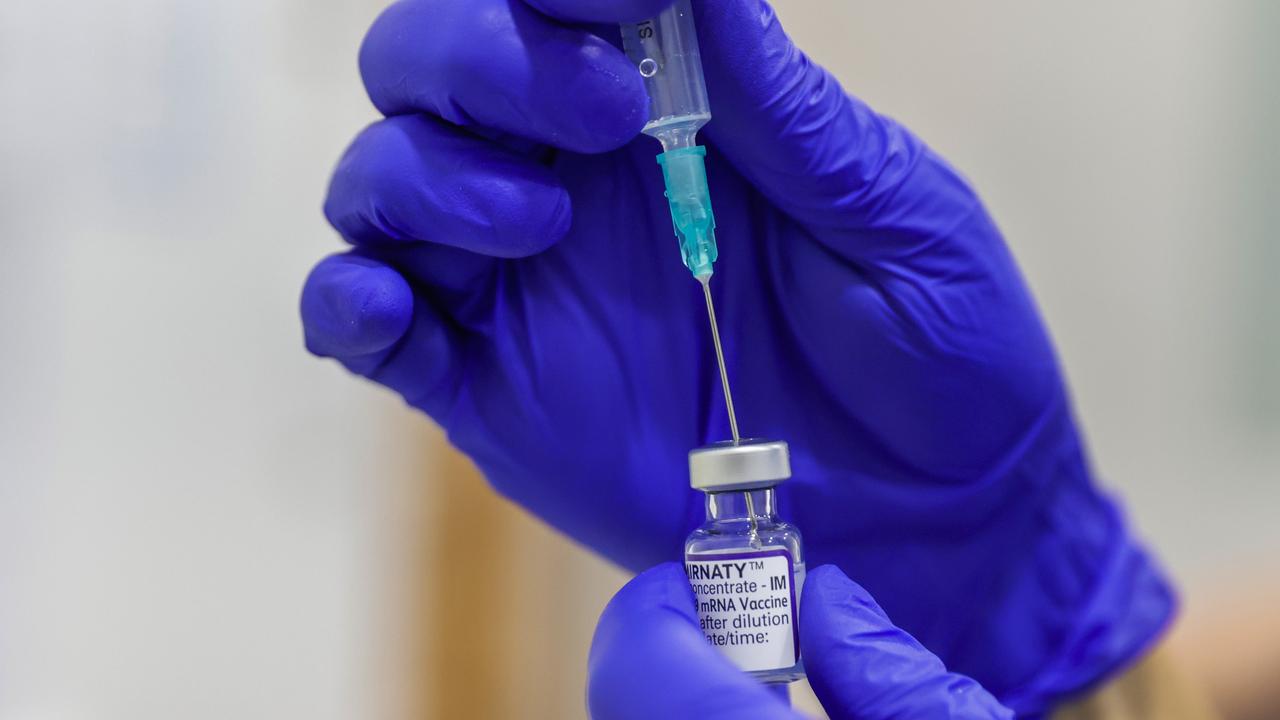Covid-19 wave could have ’plateaued’ in Australia: experts
Has Australia seen the worst of the latest winter Covid-19 wave? It appears we have turned a corner, and epidemiology experts have foreshadowed what’s to come.

NSW Coronavirus News
Don't miss out on the headlines from NSW Coronavirus News. Followed categories will be added to My News.
The worst of the winter Covid-19 wave has likely peaked in NSW, experts believe, with case numbers now falling.
And future waves are unlikely to be as severe in Australia, although the virus will never likely go away.
The latest figures on infections shows July 22 was the state’s worst day for new infections – with 18,669 cases recorded.
By comparison, Monday’s case figures – tracked by Our World in Data – were down to 10,702 and have been falling since July 27.
At the height of the summer wave that hit Australia’s shores at the start of the year, NSW recorded 48,768 cases in one day on January 8.

But there are still high numbers of patients in NSW in hospital with the virus – 2289 counted on August 2 – the fourth highest number in the pandemic to date, along with 76 in ICU and 26 on ventilators.
Infectious diseases expert Dr Peter Collignon says hospitalisations always lag by a week or so.

“I think it is turning,” he said. “I think we’re over the worst of it actually.
“It is winter and that’s why the BA. 5 wave is a little bit longer, but if you measure hospitalisations it’s about the same as January.
“We can’t make this go away. We can do the best we can.
“We’ll get new variants but I doubt we’ll have another wave that will be as bad as the last four waves.”

He believes sewage testing is the best way to keep track of the pandemic and Australia is not doing this enough.
“Sewage testing gives you a week’s warning before cases appear, it tells you where it’s higher and you can tell what variants are there,” Professor Collignon said.
“If we did better sewage monitoring and reported it in a timely fashion, if you see a spike you know then you’ll see more cases in about three or four day’s time and more hospitalisations in ten days.
“So you’ve got a warning to be prepared.”
Deakin University epidemiologist Professor Catherine Bennet said “all the signs are suggesting we have now come off the growth curve in infections with the BA. 5 variant”.
“It may take a while yet to see the numbers drop and there may be a few bumps before they do, but it looks like we have plateaued and this so now consistent across the country with the same pattern now appearing in the national level data.

“So far we haven’t heard of new variants that might cause another imminent surge – BA4/5 were first described back in Jan/Feb in South Africa.
“So hopefully this will give is the time we need for infections to drop down further and reduce the force of infection that has made it harder for more vulnerable people to shield from the virus and will take pressure off hospitals.
“As we head into spring and can spend more time outdoors, that will help too.”
The latest NSW Weekly Surveillance report published on July 28 – covering the week up to July 23, reported 918 hospitalisations in the prior fortnight.
Of those, 221 people had had four vaccine shots, 292 had three shots, 165 had two shots, 14 had one shot and one person had no vaccine.
The current Omicron wave driven by the BA. 4 and BA. 5 subvariants is far more infectious than earlier variants and have a greater ability to escape immunity from vaccines.





